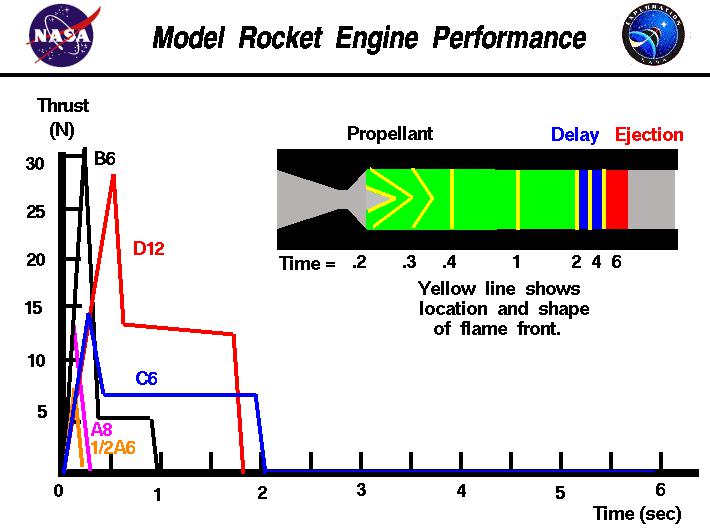How does the shape of a rocket affect its performance ...
How does the shape of a rocket affect its performance?
At supersonic speeds (faster than the speed of sound), the best shape is a narrower and sharper point. Rockets with a larger diameter have more drag because there is more air being pushed out of the way. Drag depends on the cross-sectional area of the object pushing through the air.
Why do rocket have to be so big?
Mainly because you need a lot of speed to go into space, and to each that speed, you need to accelerate. If you need a high speed, you will need to accelerate for a long time, thus the need for a large quantity of fuel. You also need to compensate for gravity the whole lift.
How does the length of a rocket affect its flight?
stays the same, the distance a rocket can travel will change. Increasing the length increases the surface area. The rocket will have a harder time escaping Earth’s atmosphere and will have to use more fuel, reducing the distance it can travel on fuel. It will have an easier time escaping, using less fuel on the way.

What is the body of a rocket called?
body tubeThe body tube (or tubes) are the airframe of the model rocket. Body tubes are typically made from paper, fiberglass, or plastic, with the spiral-wound paper tube being the most common.
How do rockets not fall?
3 Answers. Nowadays, rockets use a Gimbaled Thrust System. The rocket nozzles are gimbaled (An appliance that allows an object such as a ship’s compass, to remain horizontal even as its support tips) so they can vector the thrust to direct the rocket.
What percentage of fuel is used during takeoff rocket?
The Saturn V payload to Earth orbit was about 4% of its total mass at liftoff. The Space Shuttle was only about 1%….Feature.
PropellantRocket Percent Propellant for Earth OrbitKerosene-Oxygen94Hypergols93Methane-Oxygen90Hydrogen-Oxygen83What is inside a rocket?
Rockets consist of a propellant, a place to put propellant (such as a propellant tank), and a nozzle.
What are 3 of the most common rocket fin shapes?
The most common fin planform shapes for experimental high-powered and experimental sounding rockets are clipped delta, trapezoidal, and elliptical.
What causes a rocket to fly?
Rockets work by a scientific rule called Newton’s third law of motion. The exhaust pushes the rocket, too. The rocket pushes the exhaust backward. The exhaust makes the rocket move forward.
How fast do rockets accelerate?
To reach the minimum altitude required to orbit the Earth, the space shuttle must accelerate from zero to 8,000 meters per second (almost 18,000 miles per hour) in eight and a half minutes. It takes a very unique vehicle to accomplish this.
How much of a rocket weight is fuel?
The Soyuz rocket is 91% propellant by mass and uses kerosene-oxygen in all of its three stages. There is an advantage to using hydrogen-oxygen as a high performance propellant; however, it is technically more complex….Feature.
VehiclePercent Propellant (fuel)Rocket85How much fuel is needed for a rocket?
At liftoff, the two Solid Rocket Boosters consume 11,000 pounds of fuel per second. That’s two million times the rate at which fuel is burned by the average family car. The twin Solid Rocket Boosters generate a combined thrust of 5.3 million pounds.
Is it better to have a lighter or heavier rocket?
A heavier rocket requires more thrust to reach space, which ultimately increases the overall cost of the rocket. Engineers try to find ways to reduce the weight of a rocket by using lightweight materials. However, lighter is not always better.
How fast is a rocket?
This really depends on what you mean by “into space.” If you just want to get into orbit around the Earth, you need to reach speeds of at least 4.9 miles per second, or about 17,600 miles per hour.
-
Latest
 The Dilemna Dilemma. | Grasping for Objectivity
The Dilemna Dilemma. | Grasping for ObjectivityI hated English in school, and I don’t expect that my blog follows the rules of the AP Stylebook – like, ever. I have endless grammar quirks that I am positive make my journalist friends secretly desp...
-
Next
 Everyone: Please Stop Praying to the Universe - Word on Fire
Everyone: Please Stop Praying to the Universe - Word on FireIt occasionally is discovered that a person has been offering prayers to the universe. Perhaps this person is simply giving thanks, or maybe this individual is trying to get something out of the excha...
Popular Articles
- Rocket Power (TV Series 1999–2004) - Rocket Power (TV Series ...
- technique - What is the definition of 'playing in the pocket ...
- "Pocket rockets," in poker Crossword Clue Answers, Crossword ...
- 5 Sex Toys Every Man Should Own, Use & Use Again - LA Weekly
- Pocket Holsters: 11 Options For Easy Everyday Carry (2021 ...
- What is Elton John's most successful song? (Celebrity Exclusive)
